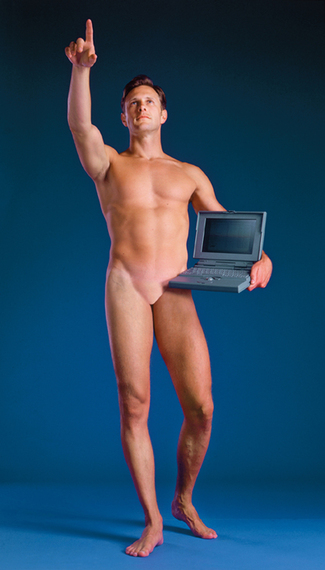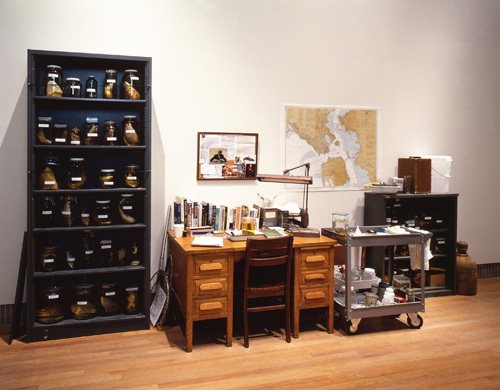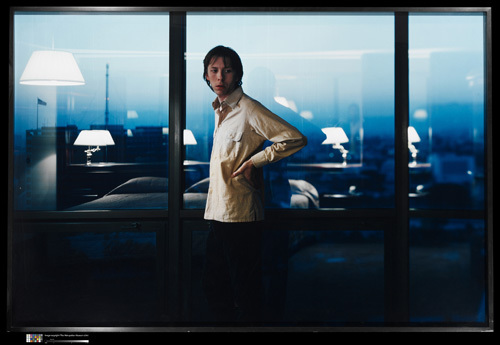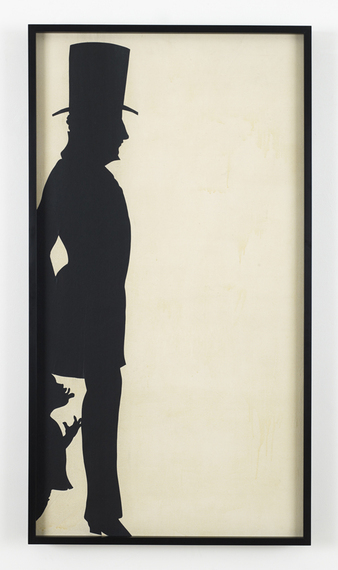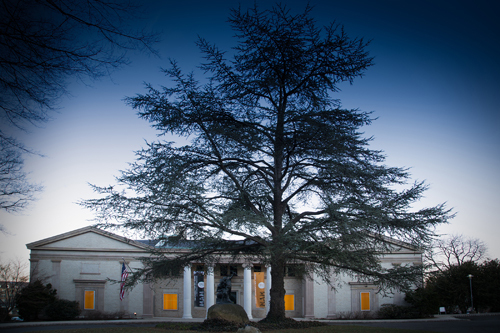The Montclair Art Museum (MAM) and the Whole Foods Market face each other on opposite sides of Bloomfield Avenue. Five years ago, the regional museum known for its distinctive collection of Native American and American art, hired Alexandra Schwartz as its first Curator of Contemporary Art. Schwartz's mandate, according to Lora Urbanelli, MAM's Director, was to "think about contemporary art and issues and to make us more relevant to our community."
No easy job for a local museum in the metro area, even for one with a substantial endowment and a 100-year history. MAM celebrated its centennial in 2013. "We knew that we could not compete with the offerings in our region and we had to find a niche. Our audience is very sophisticated and very cosmopolitan," she said. "Montclair is a community that thinks of itself as very plugged in. It is a real mixture. We have an old, established African American community; we have artists and writers and creative types (she mentions David Carr, a local resident who just died); and we have serious gardeners, among others."
Competing for the community's attention on weekends was a challenge, Urbanelli explained, because of the proximity to and draw of New York City. "The flow is so porous. People travel back and forth to Mecca," she said, referring to Manhattan's artistic and cultural offerings. "We changed our profile to make the museum feel more open and lively, to make it more concerned with things around us."
Historically, MAM was always something of a pioneer. William T. Evans, the Montclair civic leader who chaired the commission that led to the museum's founding, pledged 36 American paintings for a new gallery in 1909. When the museum opened in January 1914, the collection donated by Evans included paintings by well-known contemporary artists including Ralph Albert Blakelock, Leon Dabo, Childe Hassam, and Chester French as well as The Sun Vow (executed in 1889 and cast in 1902), a bronze sculpture by Hermon Atkins MacNeil depicting a Native American rite of passage--a young man shooting an arrow into the sun--that was installed on the grounds at the front of the building. During subsequent years, especially between 1952 and 1979 under the leadership of Kathryn Gamble, the museum added major works to its collection by such artists as Thomas Eakins, William Merritt Chase and George Bellows. Artist Moses Soyer left a bequest to the museum in 1974 with works by Raphael Soyer, Ben Shan, and Reginald Marsh and, in the 1980s, the collection grew with the addition of works by Louise Nevelson, Ad Reinhardt, Robert Motherwell, Willem de Kooning and Richard Diebenkorn.
From the 1990s onward, the Museum began to shift toward acquiring modern and contemporary art, a turn that Lora Urbanelli and the current MAM Board of Directors' support. "We feel that we have lost some time but we are off to a good start," Urbanelli said, noting that by their own decree, $150,000 a year from their endowment has been set aside for the acquisition of contemporary art. For the Centennial year, board members allotted $1 million for new acquisitions; so far about half of this money has been spent. One major purchase was Spencer Finch's Yellow (1913), a site-specific permanent installation for the Museum's façade. "Finch's idea was to pierce the window frames with his project--giving off a domestic yellow glow as if somebody is home."
Over the years, MAM had several contemporary shows including Objectifications, an October 2008-February 2009 exhibit of 40 works by Philip Pearlstein, including expressionist paintings of the 1950s, female and male studio nudes, landscapes and cityscapes. But it was not until the fall of 2010, with the hiring of Alexandra Schwartz and the launch of MAM's Contemporary Art Program, that MAM shifted its emphasis to more edgy contemporary art.
Schwartz officially began the contemporary art program in 2011 with New Directions, solo shows by younger artists, most of whom lived in Brooklyn. "These were artists who were keenly interested in engagement," she said. "It was a way to get word out to the community." There were talks and performances, with many of the artists giving tours.
At the same time, Schwartz began to think about an idea that evolved into MAM's current major exhibit, Come As You Are: Art of the 90s. "So many of the exhibits twenty years ago were about identity politics," she said. In particular, Schwartz remembered the 1993 Whitney Biennial. "It was something of a unique moment," she said, "where artists doing political work were being shown in major institutions. There was a real art into life crossover."
Schwartz decided to look at the whole decade through a slightly wider prism, using as bookends the fall of the Berlin wall in 1989 and 9/11 in 2001. Building a checklist for the loan show (only two photographs in the exhibit by Catherine Opie come from MAM's collection) was complicated. Ultimately, Schwartz divided the show into three chronological sections: the early 1990s (1989-1993), a period that was dominated by "debates around identities and difference"; the mid-1990s (1994-1997), a period "marked by the precipitous rise of digital technologies"; and the late 1990s (1998-2001), years that saw the rise of globalization. Although Schwartz admitted that there was often overlap among the three sections, the decision to shape the show chronologically seemed a good one. "So many contemporary art shows today are thematic and ignore history," she said.
One decision by Schwartz was firm: she would only include artists who emerged during the decade, most of them born in the 1960s. The show, Come As You Are, up at MAM until May 17th and then traveling to Savannah, Ann Arbor, and Austin, draws its title from the song on the 1992 Nirvana album Nevermind whose lyrics open with the words: "Come as you are, as you were/ As I want you to be/As a friend/as a friend/As an old enemy." Cultural icon Kurt Cobain, Nirvana's singer/guitarist struggled with a heroin addiction and died several years later of a possibly self-inflicted shotgun wound to the head.
An early work by Kara Walker, Untitled (1993-1994), a cutout on canvas, hangs front and center in the first gallery. It shows a man in formal attire, probably a plantation owner, with a small child, probably a slave, hidden under his tailcoat and about to perform a sexual act. Nearby is Andrea Fraser's fake docent tour video from 1989, where Fraser looks at art that isn't contemporary. "It's a brilliant example of a brilliant school," she says, in a proper, educated voice that is funny, satirical and, above all, theatrical. Throughout the 1989-1993 section, the wall color is teal; "it was the color of the period," Schwartz said.
Gabriel Orozco's Pinched Ball (Pelota ponchada) 1993) a silver dye bleach print, also hangs in the section. The print appears as the cover image of the catalogue for the exhibit, published in association with the University of California Press. There is a soccer ball on an anonymous street in an anonymous city. The ball is deflated. In the middle of the ball is water in which the viewer sees the image of the sky. "It is the energy of the global and yet the lack of energy," Schwartz commented, as she walked through the Rand Gallery housing MAM's permanent Native American exhibit, to move on to the continuation of the Come As You Are show.
The walks through the Native American Art and subsequently through the George Inness Gallery, home to Inness's Hudson River landscapes, are a reminder that MAM must balance historical with contemporary, both in its architecture and in its mission.
The last gallery in the 1989-1993 section includes work that addresses identity and difference. There is Glenn Ligon's Invisible Man (Two views) 1991 and Aziz + Cucher's Man with a Computer 1992, a work made with a precursor of photoshop. In it, a nude man stands before us holding his Mac computer; all of his masculine attributes and his genitalia erased. There is Sharon Lockhart's chromogenic print from 1996, 73 x 109 in., an image at the forefront of the movement toward large-scale photography. It is a photo of a grunge guy, looking rather exhausted and very 1990s, in a totally anonymous hotel room. Lora Urbanelli describes the work as "gorgeous." In a section devoted to painting, there is Elizabeth Peyton's Princess Kurt 1995, a portrait of Kurt Cobain in drag at a concert in Brazil.
In the final section 1998-2001, dealing with digital technology, there's a mixed media piece my Mark Dion, Department of Marine Animal Identification of the City of San Francisco (Chinatown Division) 1998. Dion was interested in biology, geology and botany and the installation supposedly replicates his lab. A bookcase with glass jars houses the fish preserved in alcohol collection. Neatly arranged on his adjacent laboratory desk are his reference books, including a Latin dictionary.
Although the show will be up until mid-May, Schwartz has already scheduled three contemporary shows, as part of the New Directions series, for 2016-2017: Dannielle Tegeder (February-June 2016 for an installation of drawings and paintings in MAM's front entrance gallery, and February 2016-June 2017 for a site specific installation and display on the museum's outdoor video monitors); and William Villalongo (September 2016-June 2017). Still in development is a show with the working title: "New Century Modern: Contemporary Artists Examine Design" tentatively scheduled for Fall 2018.
But beyond MAM's decision to show and acquire edgier contemporary art, the museum has given deep thought to its larger mission. With community pressure to offer more studio classes, MAM has realized that it needs a greater educational focus. As a consequence, Urbanelli said, the MAM Board of Directors decided to expand programs and bring the word education into the first sentence of their mission statement.
With an annual operating budget of $4.2 million, MAM faces the challenge of raising about 90 percent of its operating budget. Currently, they receive annual funding of $250,000 from the New Jersey Council on the Arts and they draw down another $220,000 from their endowment to keep the museum running. This means that there is a constant effort to raise money from other foundations, corporations, and private donors to meet operating expenses. "We apply all the time," said Urbanelli.
For the moment, MAM's current exhibit seems prescient. Two days before the Come As You Are: Art of the 1990s show opened in February, Kurt Anderson wrote an op-ed piece on the 1990s in The New York Times. Anderson described the 1990s as a time when the unemployment rate dropped to 4 percent, when median American household income grew by 10 percent, when there were dramatic reductions in violent crime and in deaths from H.I.V./AIDS, when South Africa dismantled apartheid and when the Oslo Accords were signed by Israel and the Palestine Liberation Organization. It was Kurt Andersen concluded, the "last best American decade."
Not sure that the artists included in the MAM Come As You Are: Art of the 1990s exhibit would agree with him.
Aziz + Cucher, Man with a Computer 1992
Mark Dion, Department of Marine Animal Identification of the City of San Francisco (Chinatown Division) 1998
Sharon Lockhart, Untitled 1996
Kara Walker Untitled 1993-1994
All Photos above: Courtesy Montclair Art Museum
Spencer Finch, Yellow 2013
Photos by Andy Foster for Montclair Art Museum
